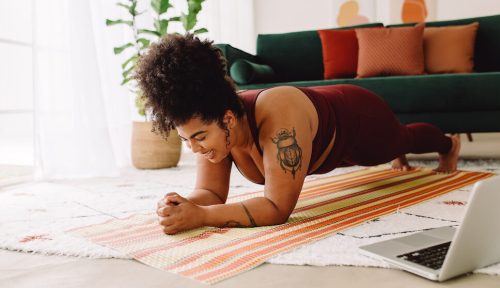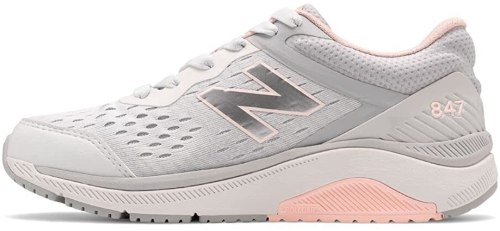Our editors independently select these products. Making a purchase through our links may earn Well+Good a commission
The 6 Best Balance Tips We’re Using for a More Steady 2023
For a more stable, steady 2023, check out the balance tips we learned from personal trainers and physical therapists last year.

Whether you’re a seasoned professional triathlete or a parent who gets their exercise from chasing kids around all day, balance plays a role in everything you do. At its peak, great balance has the power to support us during workouts, long shifts standing on our feet, and everyday chores; at its worst, poor balance can lead to injury, keeping us from doing the things we love.
Experts in This Article
instructor at East River Pilates in New York City
Emily Gustin, DPT, is a physical therapist who specializes in working with clients who have arthritis and balance issues.
fitness personality, recipe developer, creator of the Katie Austin app, TV host, and Sports Illustrated model
ACE-certified personal trainer and founder of Stephanie Thomas Fitness
Steve Burden, CPT, is a certified trainer at The Fitness Tribe.
“Having balance is so important—not only in fitness but in our everyday lives,” fitness trainer Katie Austin previously told Well+Good. “Balancing is a huge aspect of any movement we do—even when we’re standing on our own two feet, we’re maintaining balance whether we’re aware of it or not.”
If you struggled to maintain balance in 2022, this list is for you! For a more poised, steady 2023, read on to discover our favorite balance tips from last year.
6 best balance tips we learned in 2022
1. How to test your balance in 30 seconds
To get a clear idea of where your balance level is currently at, try this simple, 30-second balance test. While standing on one leg, close your eyes, cross your arms over your chest, and try to stay in this position for as long as possible.
If you can last the full 30 seconds, congratulations! Certified personal trainer Justin Agustin says this indicates excellent balance. If you last for more than 15 seconds, your balance is considered above average, and anything below 10 seconds is considered to indicate below average. If you belong to the latter category, no fear: Incorporating balancing exercises into your workout regimen can improve your results over time.
2. Good balance starts at your toes
When most of us think of “good balance,” we think of it beginning at the head down through our torso. But personal trainers say that the key to great balance lies in our feet. Our feet and ankles provide stability for the rest of our body; without a solid foundation, our balance suffers.
Foot and ankle exercises like toe curls and heel raises can strengthen and stretch both, providing a solid platform for the rest of our body. Investing in proper footwear can also make a world of difference when it comes to maintaining good balance and posture. Certified personal trainer Stephanie Thomas recommends sneakers with velcro straps, firm soles, and wider tops that allow your feet to stretch and grip the ground as you walk.
ThirdLove Just Launched Bras That Help Balance Your Body Temperature—Here’s Why That’s a Game-Changer for Women in All Life Stages

These Are the Only Types of Underwear You Should Be Wearing, According to Gynecologists

These Are the Summer Essentials You Should Bring With You Every Time You Leave the House, According to a Derm and an RD


New Balance 847v4 — $140.00
3. To improve your balance, try walking backwards
A 2022 viral TikTok trend introduced the benefits of walking backwards to us. Walking in reverse slowly on a treadmill challenges our coordination, activating our often-underutilized hamstrings and shin muscles. The focus required to take each backwards step helps improve our mind-body connection, too.
Another reason to try walking backwards: It’s good cardio.
“[Walking backwards is] an effective way to develop your cardiovascular system, without the kind of impact and strain associated with traditional activities that require you to move at a faster pace,” personal trainer Steve Burden previously told Well+Good. “It also offers a way to fit cardio into shorter sessions, as making your heart work harder means you won’t have to perform the activity for as long to achieve the same results.”
4. Which stretches improve balance
There’s a strong relationship between flexibility and balance. Limited flexibility (the capacity for your muscles and their supporting connective tissue to move through their full range of motion) can spell disaster for our coordination: If our muscles and tendons are unable to stretch and compensate for uneven terrain, there’s an increased possibility of falling and hurting ourselves.
“When muscles and tendons aren’t able to move freely and evenly, it’s harder to do everything—including balancing,” physical therapist Emily Gustin, DPT, previously told Well+Good.
Luckily, regular stretching can help improve our flexibility over time. Dr. Gustin recommends using this 30-second stretch routine every day for increased flexibility.
5. How to embrace “wobbling”
Wobbling is a sign that our bodies are fighting to maintain a difficult position and are thoroughly challenged by it. Balance can only be improved through practice, and wobbling is a normal part of that. The common saying “the magic happens outside of your comfort zone” can be applied to improving your balance: A little wobble can be a positive sign that your body is working to adapt to new positions.
“Balance is all about correction,” Brian Spencer, East River Pilates instructor, previously told Well+Good. “It’s not really about never wobbling. It’s always about being like, How do I self-correct when I’ve gone a little off course?”
Try it for yourself in 12-minute Pilates workout:
6. The main reasons why your balance isn’t improving
If you find yourself struggling to stand on one foot despite hitting the gym several times a week, take a look at your workout routine, Austin says.
An undeveloped core and imbalanced muscular development can spell trouble for your coordination and balance, so try to incorporate more full body strength exercises into your regimen. “Our balance comes from our core,” Austin previously told Well+Good. “Your core entails the central part of your body, including your pelvis, lower back, hips, and stomach. When we train our core muscles, they help the other muscles work cohesively and in harmony, which leads to better balance and stability.”
A lack of consistency in balance training can also be the reason why you’re not steadier, Austin says. Balance exercises and even full workouts for balance should become a regular part of your workout routine, not something you do once in a blue moon.
Build up that balance with a kettlebell:
Sign up for the Well+Good SHOP Newsletter
Get exclusive deals on wellness, beauty, fitness, and food products that have been hand-picked by our editors.
Got it, you've been added to our email list.







